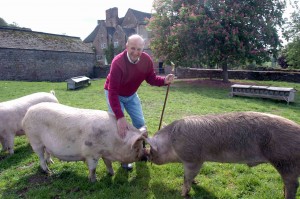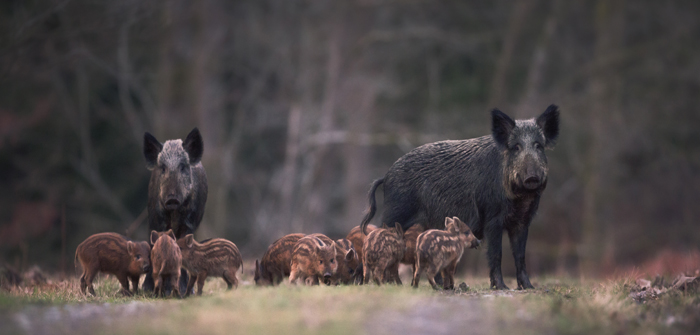The NPA is holding talks with various interested parties to try and develop a cohesive plan to manage feral boar in the Forest of Dean.
There are growing concerns about the disease risk posed to the local and national pig population by the feral. But while the Forestry Commission does have a control strategy in place its resources are limited.
NPA chief executive Zoe Davies has met Forest of Dean MP Mark Harper and the Deer Initiative to discuss possible solutions to the problem, including the use of levy money to help fund a proper control plan.
Writing in the latest issue of Pig World, Zoe writes: “We’re developing a cohesive plan on feral pig management in the Forest of Dean.
“I’ve been talking to the local MP (Mr Harper) about the industry/Forestry Commission coming together to co-fund a dedicated resource to co-ordinate efforts by landowners, farmers, councils, stalkers, Forestry Commission and Natural England to control the boar population more effectively.
“All I need to do now is convince the AHDB Pork Board that it is worth supporting. I’d hope with the emphasis on export markets and the risk those feral pigs pose, they will agree it is an entirely sensible use of levy payers money!”
Zoe stressed that the conversations have just started and that the plan will be to work with all relevant groups, including local representatives and organisations to ‘try and get some positive action’.
Writing on the NPA forum recently, Zoe said: “If successful, we will have someone based in the area who can ensure that there is effective collaboration between the Forestry Commission rangers, Natural England, local landowners, pig keepers and farmers, as well as the hunters, councils and emergency services to improve messaging to the public, log data on culling, work together to properly target the problem areas and not just move the boar around the forest and ensure the boar don’t become encouraged by hunters.”
The latest edition of Pig World also carries a feature on why the pig industry is so keen to ensure there is proper management of the Forest of Dean feral pig population.
The Forestry Commission describes the impacts on residents around the Forest of Dean and visitors to it as ‘significant’, with surrounding land being systematically destroyed and various public safety concerns.
However, the pig sector’s main concern is the potential transmission of diseases like African swine fever (ASF), which over the past few years, been spreading relentlessly westwards from Russia. Much of the spread in Europe has been attributed to either the natural movement of wild boar or, where the virus has jumped large distances, wild boar or domestic pigs consuming contaminated pork products brought in by visitors or workers.
Significant concern
Richard Pearson, Pig Veterinary Society vice president, said: “ASF and the expanding feral boar population in the Forest of Dean are of significant concern to the PVS and the pig sector more widely.
“So while our UK status as an island affords us protection from migrating wild boar in Europe, our feral pigs do give cause for rising unease, especially given the number of Eastern Bloc workers returning with meat products that could enter the food chain.”
Pig vet Fran Baird, from the George Veterinary Group, described ASF as ‘a huge threat to all UK pig producers’, potentially putting in jeopardy our £34 million pork export trade.
 Richard Vaughan (pictured), whose farm is close to where the original releases of feral pigs occurred in Ross-on-Wye, is deeply concerned about the threat posed by feral pigs.
Richard Vaughan (pictured), whose farm is close to where the original releases of feral pigs occurred in Ross-on-Wye, is deeply concerned about the threat posed by feral pigs.
His farm holds more than half of the entire UK herd of Middle White pigs – any requirement to cull it for disease control purposes would threaten the survival of the breed. He feels he is unable to allow his herd outside for fear of possible contamination. “A sustained and significant cull is needed and that means an immediate and very large increase in the resources devoted to the process,” he said.
There is an annual cull – the Forestry Commission employs wildlife rangers to do this on public land, while on private land culling is the responsibility of landowners.
Since 2012, a target population target of 400 has been set. The Forestry Commission website shows, however, that estimated numbers more than trebled between 2013 and 2017, reaching nearly 1,600 last year. However, more than 1,000 feral boar have been culled in the past two years and the estimated population dropped for the first time in 2017/18 to around 1,200.
The commission acknowledges that its short-term aim is simply to stabilise numbers, before getting the population down towards its target. But it is short on resources and the number of rangers has been cut from six to two this year.
“We need a more concerted, proactive approach to controlling the population,” Zoe said.




